With no archaeological evidence ever found, scholars have long debated where the Hanging Gardens of Babylon were located — or if they were even real.
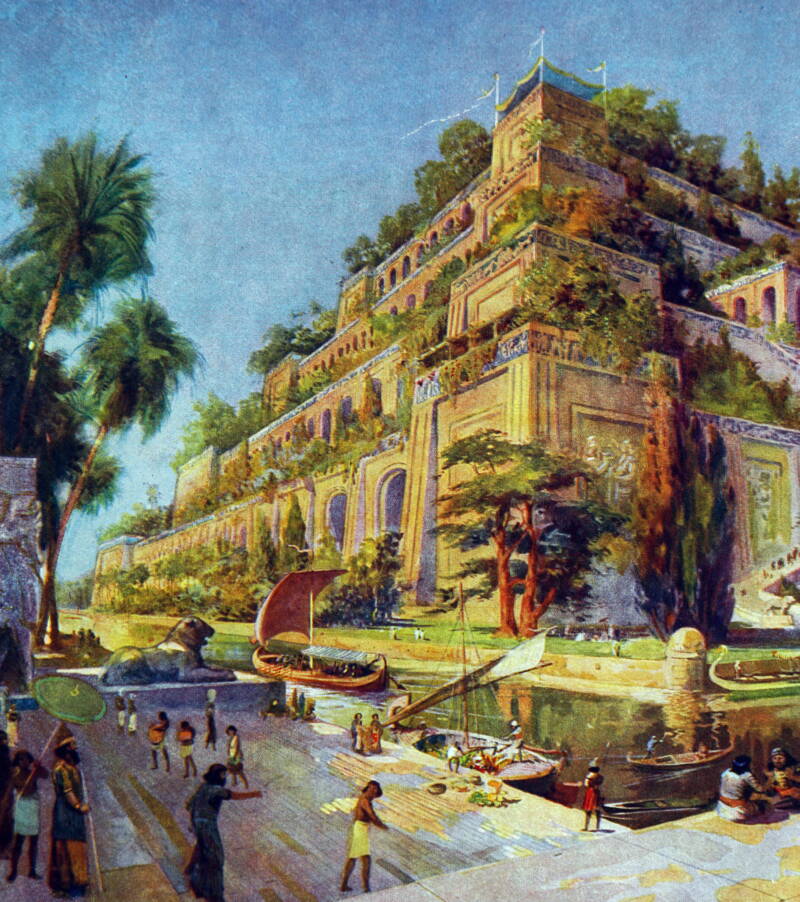
AlamyAllegedly built by King Nebuchadnezzar II in the sixth century B.C.E., the Hanging Gardens of Babylon were one of the Seven Wonders of the Ancient World.
As legend has it, Babylonian King Nebuchadnezzar II constructed the Hanging Gardens of Babylon in the sixth century B.C.E. The 75-foot-high garden was said to be a gift for his wife Amytis, who was homesick for the lovely vegetation of her native Media.
But despite ancient texts painting vivid pictures of the gardens, researchers struggled for centuries to find proof they really existed. Since then, archaeologists and scholars have been wrestling with questions of where the Hanging Gardens of Babylon may have been, what they looked like, and whether they were even real in the first place.
What Were The Hanging Gardens Of Babylon?
Imagine yourself traveling through a scorching-hot desert in the Middle East. Like a shimmering mirage rising from the sandy floor, you suddenly see lush vegetation cascading over columns and terraces as high as 75 feet.
Beautiful plants, herbs, and other greenery wind around stone monoliths. You can smell the aromas of exotic flowers hitting your nostrils as you approach the area downwind of the magnificent oasis.
You reach the Hanging Gardens of Babylon, said to be built in the sixth century B.C.E. by King Nebuchadnezzar II. The king, who reigned from 605 to 562, was known for his ambitious building projects, including the famous Ishtar Gate and the walls of Babylon.

Wikimedia CommonsAn artist’s rendering of the Hanging Gardens of Babylon.
As the story goes, the king’s wife Amytis desperately missed the lush, green hills of her homeland, Media (located in the northwestern part of modern-day Iran). As a grand romantic gesture to his homesick love, the king apparently built an elaborate garden to give his wife a beautiful memory of home.
To do this, the king constructed a series of waterways to serve as an irrigation system. Water from a nearby river was raised high above the gardens to cascade downward in a stunning fashion.
The gardens were purportedly a series of terraces, resembling a giant green staircase or a ziggurat. Each terrace was lush with a variety of trees, shrubs, and vines, creating a hanging effect as plants and flowers spilled over the edges, giving the gardens the appearance of a mountain of greenery suspended in the air.
It was the the irrigation system of the Hanging Gardens, however, that stood out as one of the more fascinating aspects of the legend. According to historical texts, water was drawn up from the river and distributed throughout the gardens by a series of pumps, channels, and cisterns, which would have required advanced knowledge of hydraulics and engineering.
The structural integrity of the terraces themselves was also a marvel. The use of stone columns to support the weight of the soil, plants, and water would have required meticulous planning and construction. What’s more, the terraces would have required waterproofing to prevent water damage, possibly using layers of reeds and bitumen.
This elaborate engineering is the main reason why historians consider the Hanging Gardens of Babylon to be one of the Seven Wonders of the Ancient World, alongside the likes of the Lighthouse of Alexandria and the Mausoleum at Halicarnassus.
But where were the Hanging Gardens of Babylon located? Were they even in Babylon? And were they actually real?
The History Of The Hanging Gardens Of Babylon
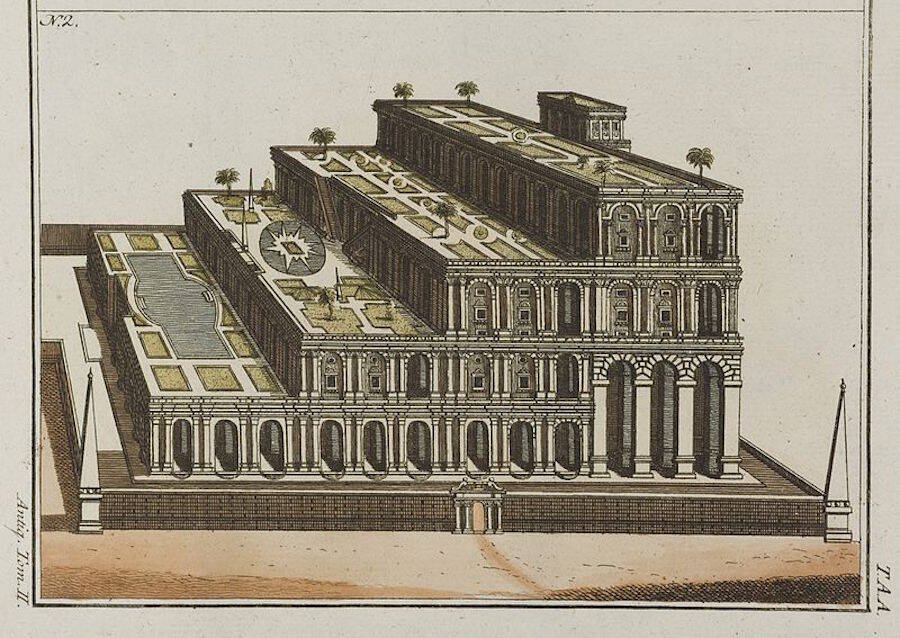
Wikimedia CommonsAn artist’s depiction of the plan for the Hanging Gardens of Babylon.
Many ancient Greek historians wrote down what they believed the gardens looked like before they were apparently destroyed. Berossus of Chaldea, a priest who lived in the late fourth century B.C.E., gave the oldest-known written account of the gardens.
Diodorus Siculus, a Greek historian from the first century B.C.E., drew on the source material from Berossus and described the gardens as such:
“The approach was sloped like a hillside and the several parts of the structure rose from one another tier on tier. On all this, the earth had been piled … and was thickly planted with trees of every kind that, by their great size and other charm, gave pleasure to the beholder.”
“The water machines [raised] the water in great abundance from the river, although no one outside could see it.”

Public DomainOne of the Seven Wonders of the Ancient World, the Hanging Gardens of Babylon have baffled historians for millennia, but recent research may finally offer some answers.
The Hanging Gardens of Babylon were likewise described by the Greek geographer, philosopher, and historian Strabo in Book XVI of his Geographica.
“Whence, among the seven wonders of the world, are reckoned this wall and the hanging garden: the shape of the garden is a square, and each side of it measures four plethra,” Strabo wrote. “It consists of vaulted terraces, raised one above another, and resting upon cube-shaped pillars. These are hollow and filled with earth to allow trees of the largest size to be planted. The pillars, the vaults, and the terraces are constructed of baked brick and asphalt.”

Public DomainStrabo, the first-century Greek historian who wrote about the Hanging Gardens of Babylon.
In addition to marveling at the engineer of the Hanging Gardens, Strabo also wrote of the aesthetic appeal of the gardens, describing them as a place of beauty and relaxation.
Two centuries later, these same sentiments were echoed by Philo of Byzantium, who compiled descriptions of the Seven Wonders of the Ancient World in his work De Septem Orbis Spectaculis. For Philo, the Hanging Gardens represented the prosperity and sophistication of ancient Babylon, a testament to human creativity and the ability to manipulate nature to create a man-made paradise.
These vivid descriptions relied solely on secondhand information passed down for generations after the gardens were demolished.
Although Alexander the Great’s army went to Babylon and reported seeing magnificent gardens, his soldiers were prone to exaggeration. As of now, there’s no known way to confirm their reports.
The impressive technology behind the irrigation system is also quite puzzling. How would the king be able to plan such a complex system in the first place, let alone carry it out?
Were The Hanging Gardens Of Babylon Real?
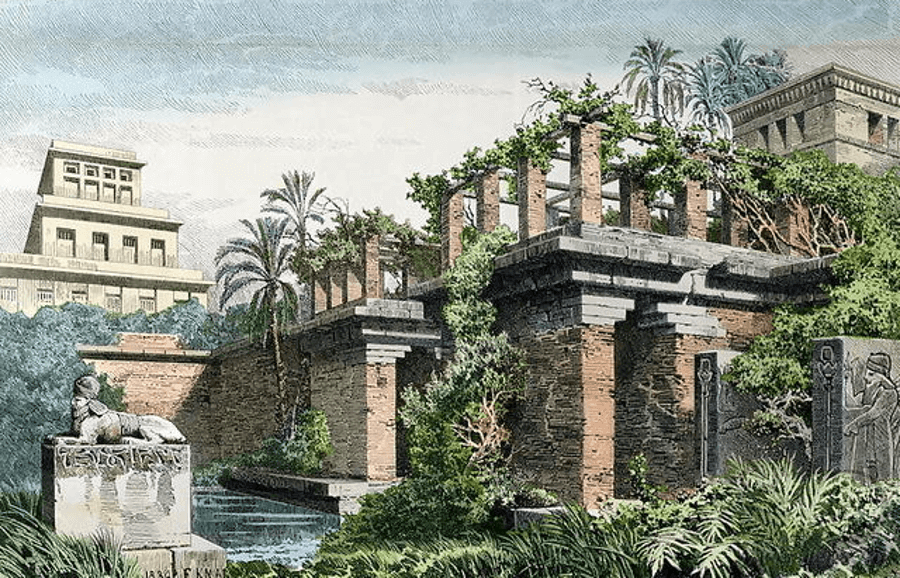
Wikimedia CommonsHanging Gardens of Babylon by Ferdinand Knab, painted in 1886.
Unanswered questions certainly didn’t stop people from searching for the remains of the gardens. For centuries, archeologists combed the area where ancient Babylon used to be for relics and remains.
In fact, one group of German archeologists spent a whopping 20 years there at the turn of the 20th century, hoping to finally unearth the long-lost wonder. But they were out of luck — they didn’t find a single clue.
A lack of physical evidence, coupled with no existing firsthand accounts, led many scholars to wonder whether the fabled Hanging Gardens of Babylon ever even existed. Some experts began to suspect the story was a “historical mirage.” But what if everyone was just searching for the gardens in the wrong place?
Research published in 2013 revealed a possible answer. Dr. Stephanie Dalley of Oxford University announced her theory that ancient historians simply got their locations and kings mixed up.
Where Were The Fabled Hanging Gardens Located?
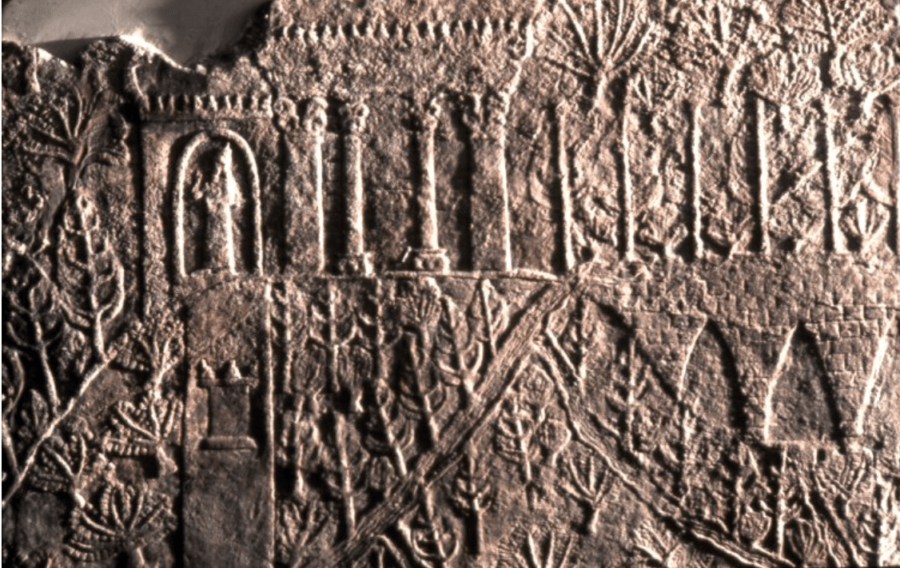
Wikimedia CommonsThe Hanging Gardens of Nineveh, as shown on an ancient clay tablet. Notice the aqueduct on the right side and the columns in the upper-middle portion.
Dalley, one of the world’s foremost experts on Mesopotamian civilizations, uncovered updated translations of several ancient texts — though, notably, not from Babylon. She had been preparing for a talk on ancient Near East gardens, yet could find no written information about the Hanging Gardens of Babylon.
“How extraordinary, I thought, and I reckoned it was worth trying to find out the reasons. Things one does not understand are often more intriguing than things that are obvious,” she said.
“The Hanging Garden is far further east than the others, and it was the only one that remained a mystery – it could not be found in Babylonian texts and archaeology. Some of my colleagues thought it must be a fictional wonder, which seemed likely to be wrong. It is stimulating to disagree!”
Based on her research, she believes that King Sennacherib, not Nebuchadnezzar II, was the one who built the hanging gardens.
She also thinks the gardens were located in the ancient city of Nineveh, near the modern-day city of Mosul, Iraq. On top of that, she also believes the gardens were constructed in the seventh century B.C.E., nearly a hundred years earlier than scholars had originally thought.
If Dalley’s theory is correct, that means the hanging gardens were constructed in Assyria, which is about 300 miles north of where ancient Babylon used to be.
Archaeological Excavations Seek To Find The Gardens
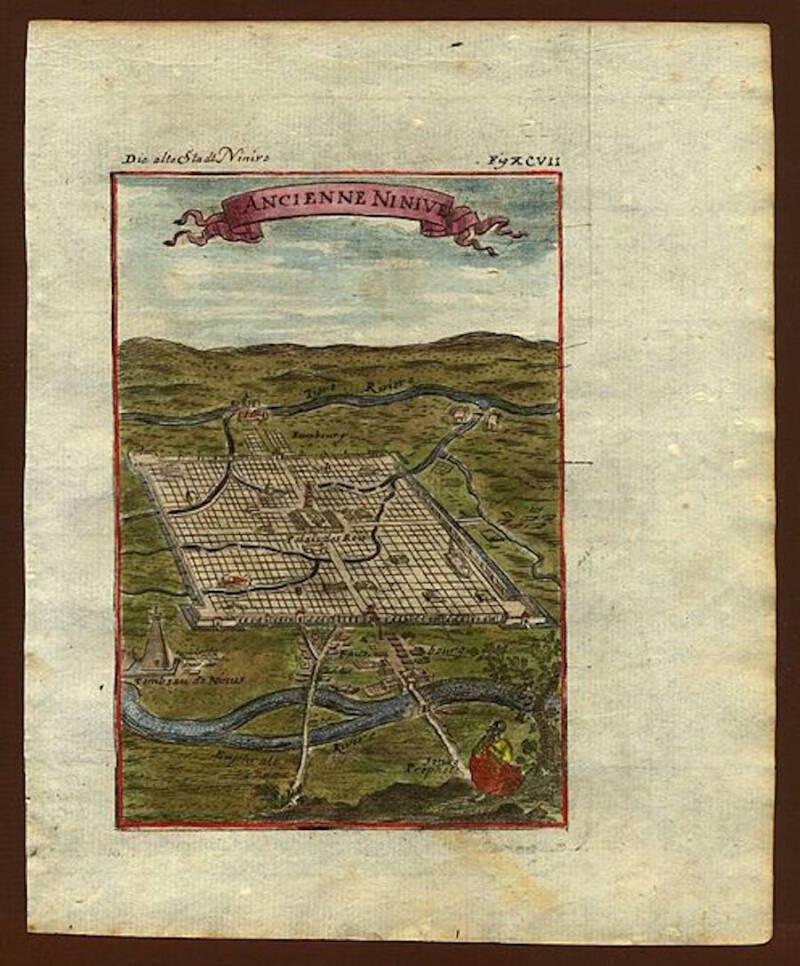
Wikimedia CommonsAn artist’s rendering of ancient Nineveh.
Interestingly enough, excavations near Mosul do appear to back up Dalley’s claims. Archaeologists uncovered evidence of a huge bronze screw that could have helped moved water from the Euphrates River into the gardens. They also discovered an inscription that said the screw helped deliver water to the city.
Bas-relief carvings near the site depict lush gardens supplied by an aqueduct. The hilly terrain surrounding Mosul was much more likely to receive water from an aqueduct versus the flatlands of Babylon.
Dalley further explained that the Assyrians conquered Babylon in 689 B.C.E. After that happened, Nineveh was often referred to as “New Babylon.”
Ironically enough, King Sennacherib himself may have added to the confusion since he actually renamed his city gates after the ones at Babylon’s entrances. Therefore, ancient Greek historians may have had their locations wrong all along.
Centuries later, most “garden” excavations focused on the ancient city of Babylon and not Nineveh. Those miscalculations may have been what led archaeologists to doubt the existence of the ancient wonder of the world in the first place.
As scientists dig deeper into Nineveh, they may find more evidence of these vast gardens in the future. As it turns out, an excavation site near Mosul sits on a terraced hill, just as Greek historians once described in their accounts.
What Did The Hanging Gardens Look Like?
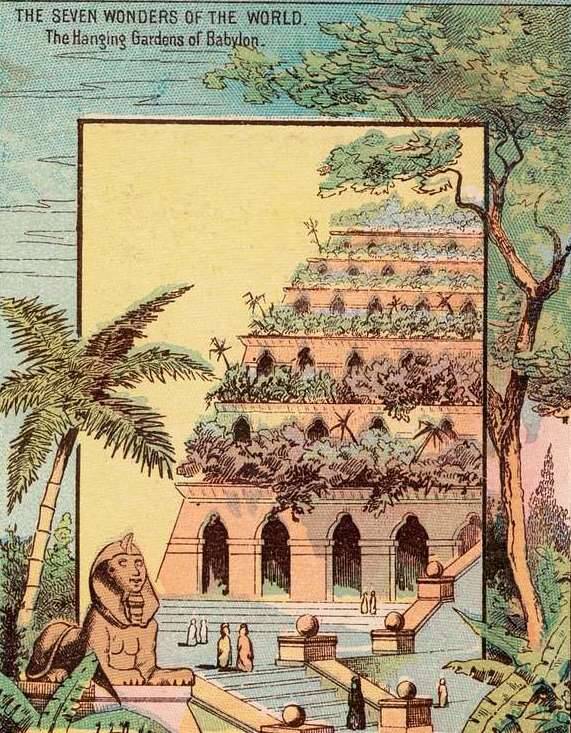
Public DomainThough they’re revered as one of the Seven Wonders of the Ancient World, there’s no evidence that the Hanging Gardens of Babylon ever existed.
As to what the Hanging Gardens of Babylon really looked like, no firsthand accounts exist. And all the secondhand accounts only describe what the gardens used to look like before they were ultimately destroyed.
So until archaeologists find an ancient text describing the gardens accurately, consider visiting your local botanical garden or greenhouse to walk among lush landscapes and carefully pruned shrubs. Then close your eyes and imagine traveling 2,500 years into the past to the time of ancient kings and conquerors.
Perhaps, even if verified records of this ancient wonder are found, the Hanging Gardens of Babylon will only remain more legendary if they stay in the realm of myth.
After this look at the Hanging Gardens Of Babylon, read about more of the Seven Wonders of the Ancient World, including the Colossus Of Rhodes and the Statue of Zeus at Olympia.





